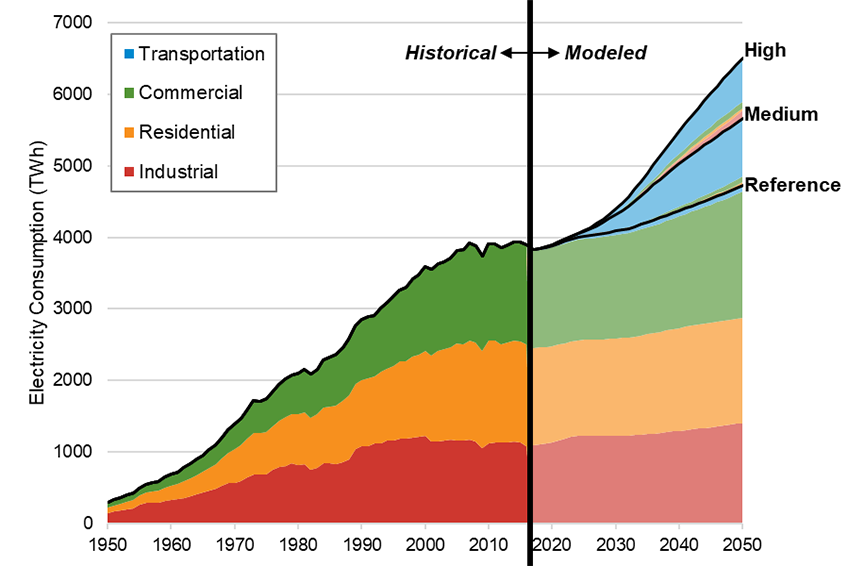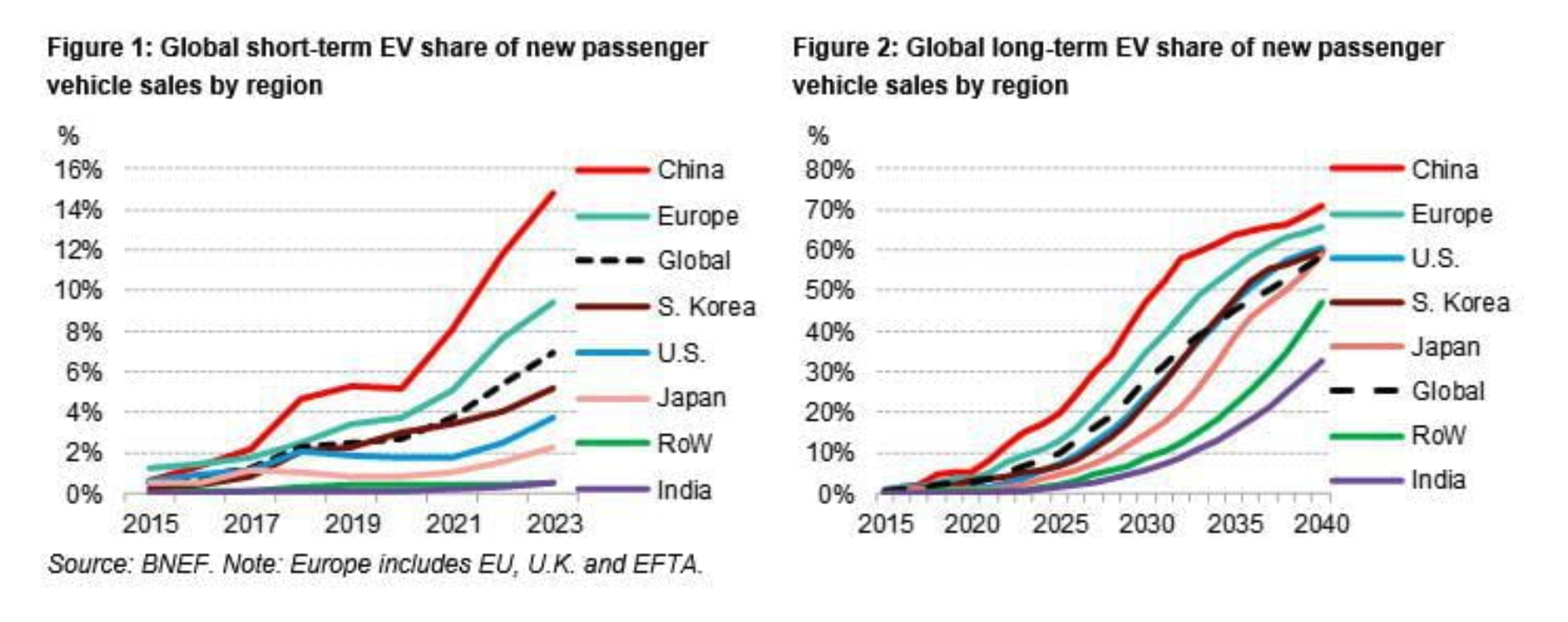EVs and OpenADR in 2021
OpenADR for Electric Vehicle charging is currently in the market seeding phase, preparing for large scale load shifting programs in the near future
3 minute read ∙ Feb 9th, 2021
In the 2010s, EVs went from a curiosity to a real market segment. In the 2020s they will go mainstream. With hundreds of new EV models coming out over the next few years and an increasing number of markets worldwide adopting EV mandates, EVs ownership is poised to explode. BNEF forecasts that 10% of vehicles sold worldwide will be EVs by 2025, with over 100M EVs on the road worldwide by the end of the decade.
For utilities, this represents a once in a generation opportunity to grow demand for electricity by about 20-40%, according to a 2018 study by NREL. In developed countries, most utilities are facing flat load or even load declines due to successful energy efficiency initiatives. This is great for consumers, but means that the only way utilities can raise enough revenue to support their aging grid is by raising rates - a very unpopular move. EV charging represents a rare chance to expand the grid, sell more electricity, keep rates under control, all while moving off oil. This will be a win for everyone who doesn't love fossil fuels.

However, unmanaged EV charging is a threat to something critical: a reliable source of power. A typical residential fast charger is approximately 4-8 kW, roughly the size of the peak load for the whole rest of the house in North America. So adding a few EVs to a block can be like adding a few new homes - not somthing the grid had originally planned for! Commercial or public settings can see even more impact, where faster chargers draw even more power.
Utilities will be managing this carefully to ensure the additional load doesn't lead to power quality issues or worse: blackouts. The default approach will be to upgrade the local grid infrastructure to ensure the power can be delivered. But infrastructure is expensive. Most EV charging is inherently flexible (an EV may be plugged in for 5-10 hours at home or at work, but only need to charge for 1-2), so the timing of that charge can be optimized to more cost-effectively manage grid impact.
The state of flexible charging and OpenADR
Controllable, flexible charging is going to be a critical aspect of the EV industry's growth. So where are we now? The current state of EV charging and load flexibility reflects the state of the overall EV industry.
EVs are still only a small fraction of new cars sold and a smaller fraction of total cars on the road, so most of the action is in preparing for the coming boom by investing in EV companies and building EV charging infrastructure.

Similarly in load shifting, the main focus for now is about preparation: achieving OpenADR certification, piloting and demonstrating solutions, and proving that your EVSE is capable of providing flexibility (as opposed to actually using the protocol to provide load shifting). In 2020, EVSEs were the largest category of new additions to OpenADR membership.
The utility sector is an active contributor to the EV charging infastructure build-out, and in many cases one of the pre-requisites for receiving incentives is that the EVSE must be OpenADR certified so that when the utility is ready to use it as a grid asset they know it will be available.
A few examples of programs in the USA that are incentivizing EV charging installation and requiring OpenADR certification for charging:
- SCE's Charge Ready program, which will fund up to 100% of EV charging installation costs
- National Grid's EV charging station program, which funds up to 100% of EV charging station cost
- PG&E's EV Charge Network program, which funds 60-80% of install cost up to $100,000
With generous incentives on offer, EVSE companies and their customers have good reason to achieve OpenADR certification and participate in utility programs.
Over the next few years EV charging infrastructure will be widely distributed, EV ownership will increase and subsequently charging use will increase. At that point, the focus shifts from preparation to action: ensuring that EV charging harmonizes with the grid operations.
There is still plenty to work out, for example:
- Will longer format charging such as at home or at the office be best managed through rate structures, demand response payments, or some combination?
- What is the best way to regulate charging where time and speed are important and not so easy to shift, i.e. at publicly sited fast chargers and superchargers?
- Will EV owners allow their batteries to be used for more intensive cycling for grid services like frequency regulation or voltage support, using vehicle to grid energy flow?
Many pilot programs and demonstrations are currently under way. Along with our EVSE partners, we are looking forward to seeing how the next few years shape up as they ramp up to large scale projects.
Interested in learning more?
Sign up for our quarterly(ish) newsletter with industry & protocol news, commentary and product updates.
Or if you'd like to discuss, contact us
